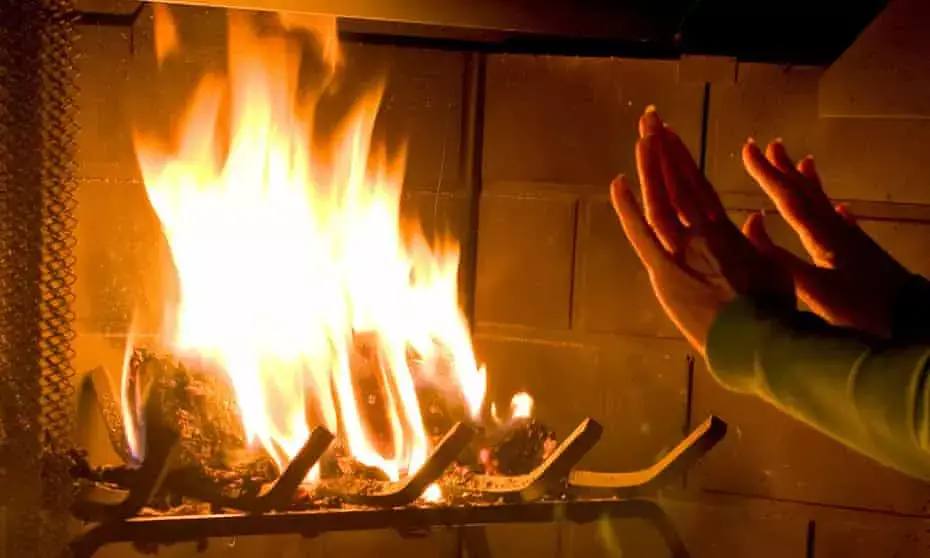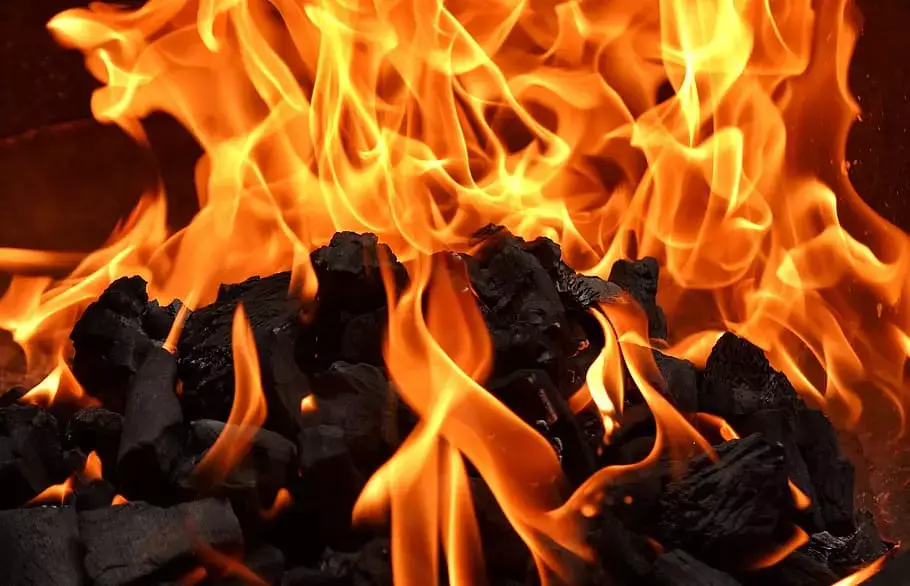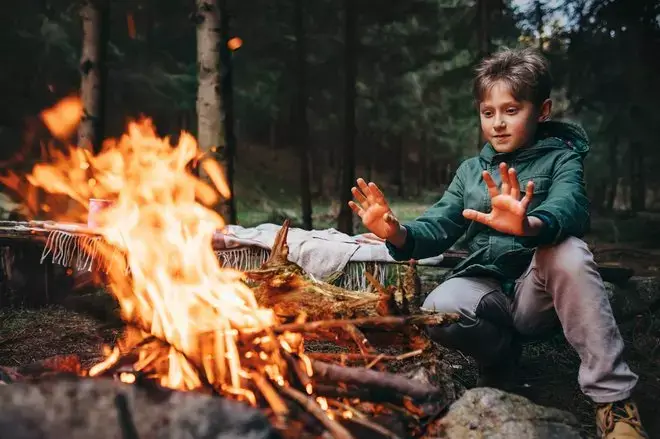Are you struggling with getting your fire to stay hot? If so, then this blog post is for you. We will give you 7 simple tips on how to make a fire burn hotter. One of the most common mistakes people make when keeping their fire burning is adding too much wood at once.
This can cause the flame to lower or even go out entirely because there’s not enough oxygen in the room. So you must add small pieces of wood slowly and steadily instead.
Another mistake people make is not stirring the fire enough. This can also lead to the flame dying out or becoming less hot. Make sure you are constantly stirring the wood and embers around to distribute the heat evenly.
You should also avoid piling logs on top of each other, as this will decrease the heat output from your fire. Instead, try to stack them in a way where the fire can still breathe and burn hot.
What Causes a Fire to Begin?
People have long tried to understand what makes a fire burn. The answer is simple – it’s the flames. However, several factors contribute to how hot your flame will be, and these include:

The Type of Wood That You’re Burning
Each type of wood will produce a different level of heat. For example, hardwoods like oak and hickory burn hotter than softwoods like pine.
Make sure you are using the correct type of wood for your fire.
If you’re looking to get your fire hot, try using charcoal. It burns at a much higher temperature than wood and will help you achieve the desired effect.
- Adding too much wood at once can cause the flame to lower or even go out
- Constantly stirring the wood and embers around will help distribute heat evenly
- Avoid piling logs on top of each other to decrease heat output
How Much Oxygen Can Get into the Room?
Your wood-burning fireplace is not going to be as efficient as it could be if the chimney is blocked. So make sure you have your damper open all the way so that the fire can get as much oxygen as possible.
You might also consider installing a glass door on your fireplace, which will help keep the heat inside and allow more oxygen to reach the fire.
If you have a gas fireplace, make sure the pilot light is on. The flames will be smaller and won’t generate as much heat if it’s not.
The colder outside, the more oxygen your fireplace needs to create a fire. Make sure you have plenty of logs or other fuel to keep the fire going.
If your fireplace is in a room that doesn’t get much use, you might want to consider closing the door to that room. This will help contain the heat and make your fireplace work more efficiently.
Make sure nothing is blocking the vents on your fireplace. If they’re blocked, they won’t get enough oxygen.
If your fireplace is in an outdoor space, such as a patio or porch, you should keep it covered when not in use so that the heat doesn’t escape.
A cover for indoor fireplaces would also help reduce drafts and prevent air leakage while maintaining proper ventilation of smoke and gases during operation.
Also Read: How To Soften Bandanas? Try These Special Methods
Fires with More Airflow Will Be Hotter Than Little Airflow
To make a fire burn hotter, you need to create more airflow. This can be done by adding more wood to the fire or creating vents in the fire pit.
If you are using a fire pit, the vents should be open. If your wood is burning too quickly, try blowing on it to increase airflow and keep it hot.
The Size of the Fire

The size of the fire will determine how hot it is.
To make a fire burn hotter, you need to keep its size consistent. Smaller fires will be easier to control and maintain than larger ones because they produce less fuel for combustion.
If your wood has large chunks in it or twigs mixed throughout, these factors can also affect the temperature of the fire.
Remember that whatever size you choose, your wood will still burn at a specific temperature – larger pieces of wood take longer to reach their combustion point.
If you want less heat but more time for cooking or socializing, use smaller pieces of wood instead.
Finally, make sure there are no air pockets in your fuel where hot air can escape. Air pockets lead to cooler spots in your fire and will keep it from burning as hot as you want it to.
How Wet the Wood Is
The type of wood you use to build a campfire can affect how hot your fire will burn. If the pieces are too wet, they won’t create as much heat or flame.
This isn’t a problem if you’re cooking dinner with an open flame – but it is bad news for those looking to stay warm. Wet firewood takes longer to catch fire and doesn’t burn as well, giving off less heat than dry wood would.
A good rule of thumb is: the smaller the pieces – the better it burns. So wood that’s about finger-sized or thinner will give you a nice hot flame, perfect for when temperatures drop outside.
If you’re looking for a fast way to get your fire going, try using an accelerant like gasoline or kerosene.
Gasoline can be found in some gas cans at campsites and even poured into lighter fluid containers that are meant to hold charcoal starter fluids, but it’s not something we recommend doing. A better option is to use kerosene, which is easy to find at any hardware store.
A little bit of this flammable liquid goes a long way toward getting your fire started – and it will burn hotter than dry wood would on its own.
Just make sure not to overdo it by adding too much. Only add one or two small drops to your fire to be safe – it should be strong enough.
Wetter Wood Doesn’t Burn as Hot as Drier Wood
Wood with a moisture content above 20 percent by weight will not burn, and wood at 30 or 40 percent.
If you have access to a kiln, you can dry your firewood in a matter of days rather than weeks or months. Stack the wood inside and set the temperature around 200 degrees Fahrenheit for an hour. This will dry the wood to about 20 percent moisture content.
If you are using green or wet firewood, make sure it is completely dried out before burning in your fireplace.
This can take weeks or months, depending on the conditions. The best way to do this is by stacking the wood off the ground and away from any walls where there might be moisture.
Split your logs into smaller pieces before burning. This will create more surface area and increase the heat output of your fire.
Make sure you have a good supply of kindling on hand to get your fire started. Small twigs, pine cones, or other similar materials work great.
Never use gasoline, kerosene, or any other type of accelerant to start a fire. This is extremely dangerous and can lead to a house fire.
Start your fire in the fireplace, and then slowly add logs to it. Pouring kerosene on an already burning fire will only create an uncontrolled flash fire that could quickly get out of hand.
Recommended: Theory Behind Why Does Glass Break When Heated
8 Simple Steps To Make A Fire Burn Hotter

1. Add Layers: Fire needs fuel, air, and heat to burn. If you put a small amount of wood on the fire, it will go out quickly as that one piece of wood consumes the oxygen.
Instead, add layers so there are many fresh pieces for the hot coals to feed upon. Then, keep adding these different fuel types until the fire is nice and hot.
2. Add Green Wood: Greenwood is fresh off the tree and has high water content. This will help produce more heat and keep the fire burning for more extended periods.
3. Use Dry Wood: Dry wood burns hotter than wet or green wood, so use it when you can. The drier the wood, the faster it will ignite and create heat.
4. Use Tinder: Tinder is a material that ignites easily and helps start a fire. Good options are newspaper, dry grass, pine cones, or birch bark.
5. Build The Fire Upward: When building your fire, make sure you build it upward. This will help create a draft and allow more oxygen to reach the flames.
6. Use A Fire Ring: If you have access to a fire ring, use it. The metal edges will help contain the heat and keep your campsite safe.
7. Build A Fire Pit: If you are in a campsite that allows fires, making your fire pit will help contain the heat and keep it at a manageable level. Dig a hole in the ground and form a ring with rocks. This will help to keep the fire from spreading.
8. Use Fire Starters: Sometimes, starting a fire can be difficult, especially if no dry wood is available. It is helpful to use fire starters such as matches, lighters, or flint and steel in these cases.
Stay Safe: Never leave a fire unattended and always make sure it is completely extinguished before you leave. Ashes can remain hot for many hours after the fire has been put out, so be careful not to touch them.
Is It True That Coal Is Hotter Than Flames?
This is a common question that people have about fires. The answer is: it depends. Flames are hotter than coals when they first ignite, but the coals will be much hotter after the flame dies down.
Flames produce heat through combustion, while coals produce heat through radiation. So if you’re looking to get the most heat out of your fire, you’ll want to start with the coals.
But there are a few things you can do to make your coals burn hotter. Here are seven simple tips:
Tip #01: Use the Right Kind of Wood
Different kinds of wood will produce different amounts of heat. Hardwoods like oak and hickory are the best for fires because they produce heat. Softwoods like pine aren’t as good because they produce as much heat.
Tip #02: Get the Fire Going in the Right Direction
If you want your coals to burn hotter, you’ll need to get the fire going in the right direction. The best way to do this is to place the logs so that the air can flow through them quickly. It would help if you also made sure that there’s plenty of space between the records so that the heat can spread out.
Tip #03: Use a Shovel to Stir Up the Coals
When you first start your fire, the coals will be at the bottom, and the flames will be on top. After that, the coals will move up to the top as the fire burns, and the flames will die down. If you want your coals to burn hotter, you’ll need to stir them up. A shovel is an excellent tool for this job because it can help you move the coals around.
Tip #04: Add Kindling and Paper Towels to Partially Burned Logs
Once you’ve got a fire going, there’s still more that you can do to make your coals burn hotter. The next thing is to add kindling and paper towels over them when they’re about halfway burned through. This will help the coals burn more quickly and easily, which means that they’ll be hotter.
Tip #05: Add Kindling When You’re Ready to Cook Food Over Your Fire
If you want your fire to produce some heat for cooking, then it’s best if you add kindling when you’re ready to start using it. This will help the coals to get up to cooking temperature more quickly.
Tip #06: Place Your Pot or Grill on Top of the Coals
If you want your food to cook over a scorching fire, then it’s best if you place your pot or grill directly on top of the coals. This will give you the option of cooking over very high heat, perfect for searing.
Tip #07: Don’t Go Too Long without Adding More Wood to the Fire
If you go too long without adding more wood to your fire, then it won’t burn as hot anymore. Unfortunately, this means that you’ll have less control over how much heat your food gets, which isn’t helpful if you want to cook it evenly. That’s why you should always add more wood when needed so that your fire can burn hotter for more extended periods.
Conclusion
Now that you know how to make a fire burn hotter, get out there and enjoy some outdoor fun. Follow these simple tips, and you’ll be able to keep your fire roaring all night long. Stay safe and have a blast.

